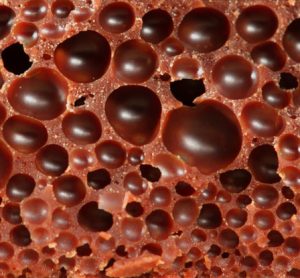Chocolate aeration – Art or science?
6 September 2011 | By Josélio Vieira, Principal Research Scientist, Nestlé Product Technology Centre and Venkata R. Sundara, Group Leader for Aerated and Filled Confectionery, Nestlé Product Technology Centre
Bubble inclusion into chocolate results in a foam in which the gas is dispersed in the continuous fat phase of mainly cocoa butter, which also contains sugar, cocoa and milk powder particles. Aeration allows chocolate products to have a low weight in relation to volume, thereby reducing the calories in…











